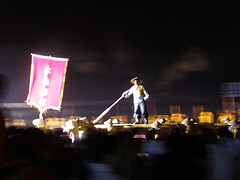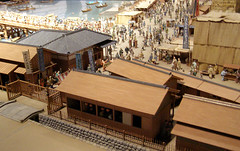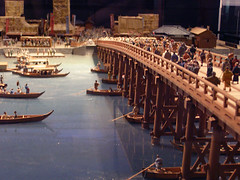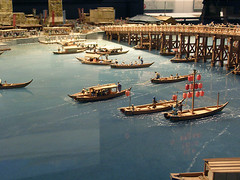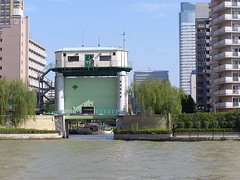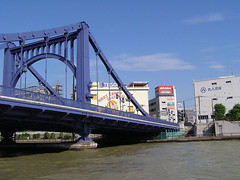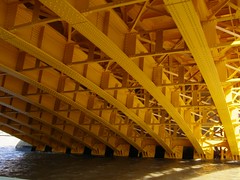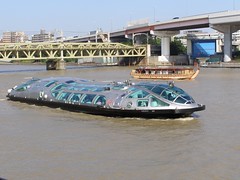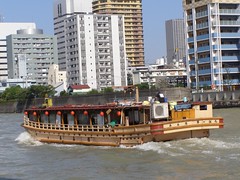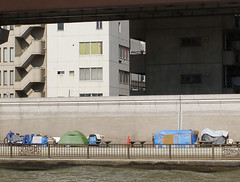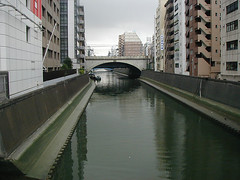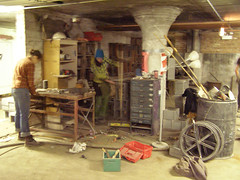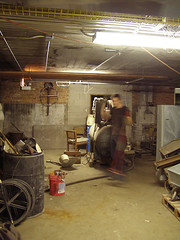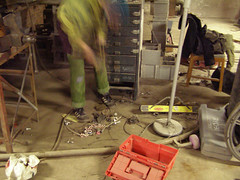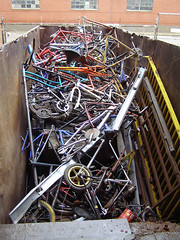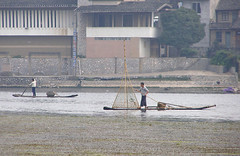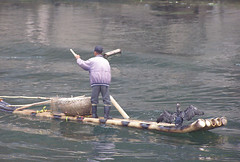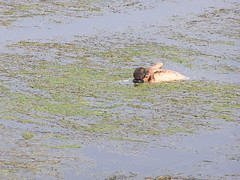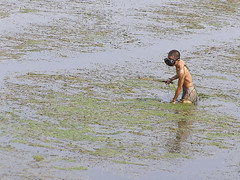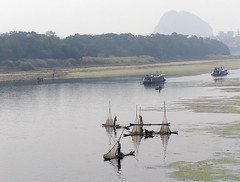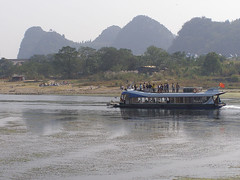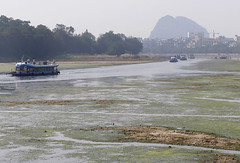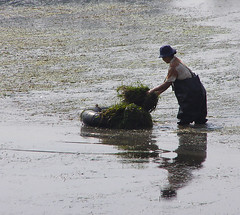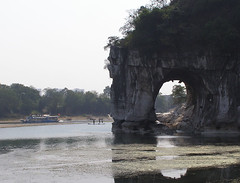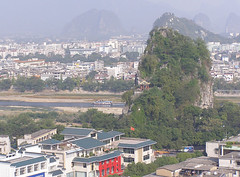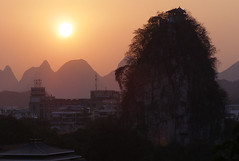The next day I woke early to be ready for the boat trip from Guilin to Yangshuo. I had purchased my ticket late the night before, in some confusion over which ticket seller was best. A note on the bulletin board at the hostel warned that the travel agency on the corner was not selling legitimate tickets, but the price of tickets sold at the hostel desk seemed quite high. I thought of joining a German couple who wanted to charter a private motor boat and split the cost, but a Norwegian guy told me he had acquired a ticket at a reasonable price at the travel agency by negotiating away the lunch normally included. I came to suspect that the note on the bulletin board was not some tidbit of travellers advice, but a ploy by the hostel service desk to not lose their business. Even the smiling and helpful desk clerks seemed to be on the make in this town.
I handed my ticket over and boarded a charter bus in front of the hostel. We made a round about the city to pick up other foreigners and headed out of town. At this time of year the river was far too low for our boats, so the bus took us a dozen miles out of town to a landing where the channel deepened as the river entered the rugged mountains. In typical Chinese tour fashion, a guide spoke the entire way on a microphone, of local legends and scenery, some of which was interesting, and some of which seemed only to kill time on the highway.
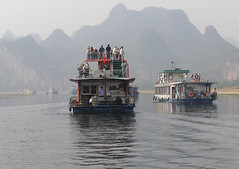
At the landing a long line of tour boats prepared for boarding as the tour busses pulled up one after another. The way to the boats was through a gift shop of souvenir foods and t-shirts. In typical Chinese tour fashion, our group of 40-50 were not given boat tickets or instructions other than to wait right here. Eventually the guide returned with his little flag to lead us onward.
Across the gangplank and onto the tour boat, we could now see that the train of 15-20 river boats was already in motion down river and we were about the last caboose of the line. The lower deck of the boat was crowded with long tables and overstuffed benches, much like a diner afloat. One by one we passengers took seats at the tables as a waiter brought tea. Our table was a diverse mix of Polish college students, Canadians on holiday, a French diplomat's family on leave from Hong Kong.
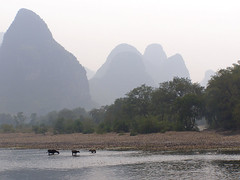
After a bit of conversation we all made our way to the upper deck to watch the scenery. The guide had warned us that vendors would try to board the boat to sell trinkets and that we mustn't encourage them. Suddenly there they were, rowing their bamboo rafts frantically out from shore. As they neared their tippy rafts were caught in the bow wake and it seemed sure they would flip and be sucked under the propellers. Somehow they hardly disturbed the cigarettes hanging from their lips and hooked a leg up on deck of our craft.

The peddlers held up their wares and shouted offers but no one was much in the mood for plastic toys and rock crystals right now. Is there really a market for that stuff out here on the river? I have no idea why they tried to sell those things, someone must by them to make it worth the trouble. After a while they gave up and cast off and back upstream to their little shanties on shore.
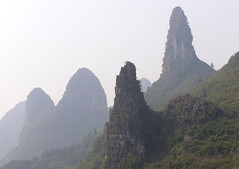
The mountains rose higher on both sides of the river, with cliffs and caves right down to the water line and craggy pinnacles on left and right. There were some with names, such as Goat Hoof Mountain, and Nine Horse Cliff, but mostly it was just rugged limestone and thick greenery.
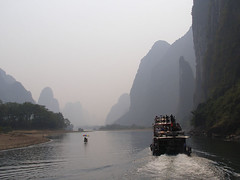
In the shallows farmers had tethered their water buffalo. True to their name, they seemed to be quite pleased to dip their big heads under the water to graze the bottom.

In some places the river seemed so shallow I was amazed we never touched bottom. Looking down from the top deck it was fun to see the river cobbles racing by in the clear water.

Presently it was time for lunch. This whole time we had been following closely on the heels of the boat ahead of us, watching the cook in his open air kitchen at the rear of the boat with his ladles and pots.
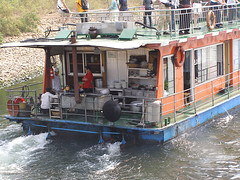
Back in the diner below we were treated to a spare meal of stir fried vegetables, fish and rice. Everyone except for the Norwegian, who sat on the upper deck alone.
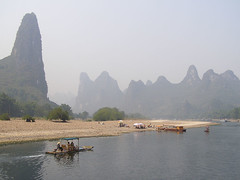
Halfway through our meal the guide came rushing down the aisle. If we'd like, we could look to the rear of the boat and see the famous mountain scene pictured on the 20-Yuan note. Sure enough, it was a spectacular tableau of spiky crags in the haze, a sublime scene.
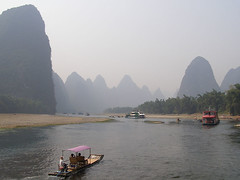
But eventually our float trip came to an end as we pulled into Yangshuo. A few too many hours in the sun for me, but what a pleasant way to spend the day, just watching a long scroll of mountains and trees roll by.

One of the attractions in Yangshuo is a riverside pageant in honor of the culture of the Li River, directed by Zhang Yimou, director of many films from "Raise the Red Lantern" to "House of Flying Daggers". The production has no plot, per se, just a rambling spectacle involving hundreds of actors singing or paddling bamboo rafts across the river in unison. A pretty picture of colors and light, but I recognized some of its visual language from the fishermen I'd seen on the river in the last few days.
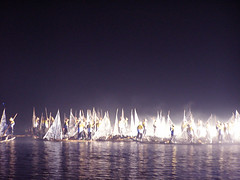
From a long line of girls in lighted costumes marching far out across the water to processions of water buffalo and cormorants, the pageant evoked a picture of life along this river in an unbroken stream from ancient times until today. It was really quite beautiful.
